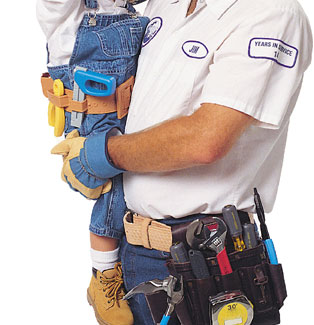You've probably never been given this much information on Heating and Air Conditioning ever.......Critical is the Airflow.
So you are probably asking yourself why those other companies and technicians couldn’t figure out a simple airflow issue with the central heating and central air conditioning system. The answer is simple:They have never gone to school. They have never studied heating, air conditioning and ventilation and they do not have the necessary tools and knowledge to measure airflow. (The picture shows ducting broken and allowing cooling and heating air to enter the attic as well as contaminating the air in the home with dust and dirt from the attic.) |
First we will tackle the schooling.There are several schools here in Southern California for teaching heating and air conditioning and they regularly graduate straight A students with perfect attendance awards with EPA certification for handling refrigerants (Freon). Unfortunately, these former students know next to nothing about diagnosing heating and air conditioning problems. They do know how to work an electrical meter and the know the basic names and attributes of the devices used for heating and air conditioning, but they know very little about real life heating and air conditioning problems and their resolutions. So their real education begins after they start in the field working on home and commercial forced air heaters and air conditioners. |
|
|
The 3 most important things with air conditioning are: 1. Airflow Let me explain so that you can teach the next heating and air conditioning service technician that comes out to your home what real heating and air conditioning is. |
1. Airflow across the firebox (heating) or evaporator coil (air conditioning)
(The picture shows a Rheem firebox that was suffering from toomuch heat brought on by a lack of airflow through the heat exchanger area. The metal fatigues and can melt or crack because of the excessive heat produced.) |
|
3. Airflow across the condensing coil.
(The picture shows clogged condenser coils on the outside portion of a central air conditioner. This is a normal regualr problem that can destroy the cooling ability of the condensing unit and lead to very high electrical bills and many breakdowns.) |
The furnace or air handler needs to be thoroughly checked first.Airflow must be verified adequate before ever putting Freon gauges on the outdoor unit. You cannot test for proper Freon pressures and Freon temperatures unless the airflow is correct. The Freon pressure figures that you get would be near meaningless. |
If you are working on central air conditioning, mini-split ductless air conditioning, central heating systems or even window air conditioning the way to diagnosis any problem is by diagnosing all the problems and then come up with the most expedient repair or replacement options for the situation. Duct work and airflow are critical to the workings and survival of your central air conditioning and central heating system. |
"Some people claim to have outstanding service; other have it. You and your staff at Empire most definitely have it. Our recet expierence with your company proved that in every way. Not only did you come in to correct a situation in which we had been victimized by another company, you helped to reverse our previous bad fortune by helping us to recoup our losses and install a system that was safe and functional. And best of all, you did it affordably. Our thanks to you, Jim, and your staff for functioning with integrity and cooperation in today's economy. Please feel free to giv eour name as reference to whomever should want to know about Empire." |
|
Mr. and Mrs. Robert Humber |
|
"We wish to take this opportunity to express out thanks and sincere appreciation for the fine and professional job your company and workers did in our home. The job to install the forced air heating system in our fine 50 year home on Hillvie Road, in West Anaheim; plu insulation. The work has just been completed in a very satisfactory manner. We would certainly be glad to recommend your company to our neighbors and friends." |
|
Gilbert Pando
|
|
"...your staff is obviously well trained and skilled in work, both in installation and sebsequent servicing. We could not ask a more pleasant, reliable service than that which you have provided to us. We're pleased to have this opportunity to recommend your organization to others, who will find Empire an unusually beneficial establishment." |
|
Robert L. McGrath |
|

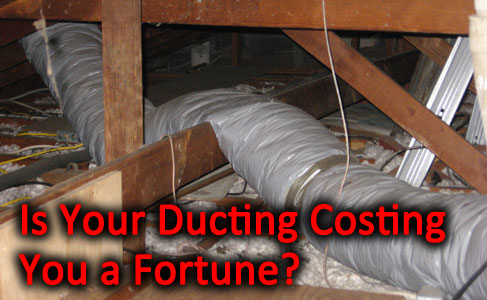
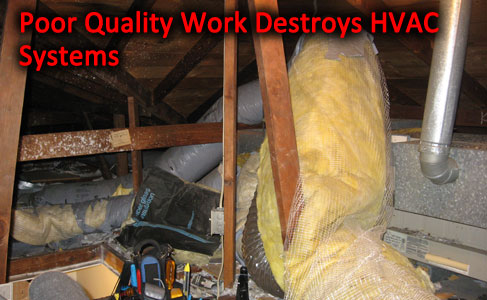
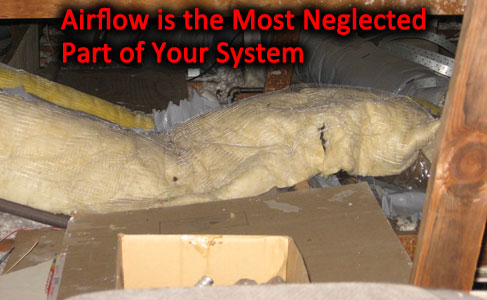

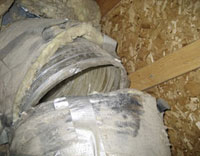 Over the years I have been called out to a great many heating and air conditioning problems that other companies and other technicians could not solve. Most of those problems, serious in nature, were quite simple to discover. Most of those problems related directly to a lack of airflow across the heating and cooling surfaces of the furnace, evaporator coil and the air conditioner.
Over the years I have been called out to a great many heating and air conditioning problems that other companies and other technicians could not solve. Most of those problems, serious in nature, were quite simple to discover. Most of those problems related directly to a lack of airflow across the heating and cooling surfaces of the furnace, evaporator coil and the air conditioner. 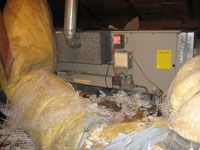 That is where their education generally stops.
That is where their education generally stops. So I decided to write a book myself.
So I decided to write a book myself. is a requirement. If you don’t have the recommended airflow across the heat exchanger you won’t be pulling the heat off of it and into the home. The firebox or heat exchanger will overheat and shut the furnace down on thermal limit. The firebox will suffer from the enormous expansion and contraction and this can lead to cracks forming and a general degradation of the furnace. A lack of proper airflow across the evaporator coil means that the interior air will not give off enough heat to the Freon in the coil to cool the home. This can lead to the evaporator coil freezing, ice forming, and flooding of the home. The furnace can suffer an electrical short circuit in the motors and the circuit boards as the ice drips water onto them. Lack of airflow across the evaporator coil also gives the same Freon pressure reading as low on Freon so the service technician servicing the air conditioning will add Freon to the system thinking that it is low. This leads to an excessive amount of Freon and liquid slugging in the compressor. The compressor cannot compress a liquid and the valves or rotor will fail. The life span of the air conditioner can be significantly shortened by the lack of airflow across the evaporator coil.
is a requirement. If you don’t have the recommended airflow across the heat exchanger you won’t be pulling the heat off of it and into the home. The firebox or heat exchanger will overheat and shut the furnace down on thermal limit. The firebox will suffer from the enormous expansion and contraction and this can lead to cracks forming and a general degradation of the furnace. A lack of proper airflow across the evaporator coil means that the interior air will not give off enough heat to the Freon in the coil to cool the home. This can lead to the evaporator coil freezing, ice forming, and flooding of the home. The furnace can suffer an electrical short circuit in the motors and the circuit boards as the ice drips water onto them. Lack of airflow across the evaporator coil also gives the same Freon pressure reading as low on Freon so the service technician servicing the air conditioning will add Freon to the system thinking that it is low. This leads to an excessive amount of Freon and liquid slugging in the compressor. The compressor cannot compress a liquid and the valves or rotor will fail. The life span of the air conditioner can be significantly shortened by the lack of airflow across the evaporator coil. 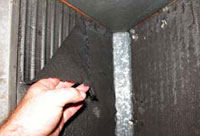 2. Airflow through the ducting into the home.
2. Airflow through the ducting into the home.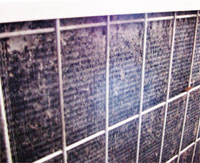 For cooling, there is very little that is so critical to the survival of your air conditioning system than the proper amount of airflow across the outdoor condensing coil. Many homeowners simply let plants grow wild around their air conditioner. They let dogs use the air conditioner as a place to go to the bathroom, urinate. And still more homeowners allow lint from dryers and grass clippings from lawnmowers to clog the coils of that outdoor unit. All of these items restrict or block the air from traveling across the outdoor air conditioning condensing coil. This restriction in airflow across the air conditioner retards the ability of the Freon to release the heat that it gains from the indoor evaporator coil. The Freon heats up and the Freon pressures skyrocket out of control. The higher the Freon pressure, the higher your electric bill, the poorer the cooling and shorter life span that your air conditioning equipment will perform. This is the main reason that you are required, for maximum life and efficiency, to have your air conditioning system serviced every year.
For cooling, there is very little that is so critical to the survival of your air conditioning system than the proper amount of airflow across the outdoor condensing coil. Many homeowners simply let plants grow wild around their air conditioner. They let dogs use the air conditioner as a place to go to the bathroom, urinate. And still more homeowners allow lint from dryers and grass clippings from lawnmowers to clog the coils of that outdoor unit. All of these items restrict or block the air from traveling across the outdoor air conditioning condensing coil. This restriction in airflow across the air conditioner retards the ability of the Freon to release the heat that it gains from the indoor evaporator coil. The Freon heats up and the Freon pressures skyrocket out of control. The higher the Freon pressure, the higher your electric bill, the poorer the cooling and shorter life span that your air conditioning equipment will perform. This is the main reason that you are required, for maximum life and efficiency, to have your air conditioning system serviced every year. 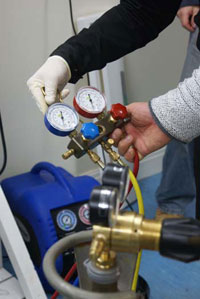 Most service technicians carry some light tools, Freon gauges and a bottle of Freon up to each home they are working on before even looking at the outdoor air conditioner and the indoor air handler or forced air furnace. This is dead wrong. Most homeowners will automatically scurry the air conditioning technician to the backyard to service the air conditioner just as soon as they arrive. This is dead wrong. Encourage your heating and air conditioning technician to look at the central furnace first, then test for Freon levels.
Most service technicians carry some light tools, Freon gauges and a bottle of Freon up to each home they are working on before even looking at the outdoor air conditioner and the indoor air handler or forced air furnace. This is dead wrong. Most homeowners will automatically scurry the air conditioning technician to the backyard to service the air conditioner just as soon as they arrive. This is dead wrong. Encourage your heating and air conditioning technician to look at the central furnace first, then test for Freon levels.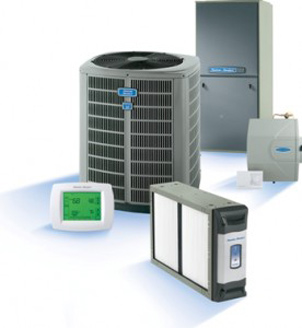

 Home Comfort Guarantee
Home Comfort Guarantee Your 365 Day Free Test Drive
Your 365 Day Free Test Drive Your No Lemon Firebox Guarantee
Your No Lemon Firebox Guarantee

